A Visit to Philip Johnson's Studio
Last week when I visited the Glass House in New Canaan to see Yayoi Kusama's red polka dots on Philip Johnson's iconic building from 1949, I was also able to get my first peek inside his Studio. For a bibliophile like me, it was a real treat.
The Studio was completed in 1980 and therefore exhibits some postmodern tendencies that are at odds with the Glass House proper: brick instead of glass; a jumble of forms instead of one Platonic form; and references to old buildings in the cone and chimney. Here is the approach to the Studio from the direction of the Glass House:
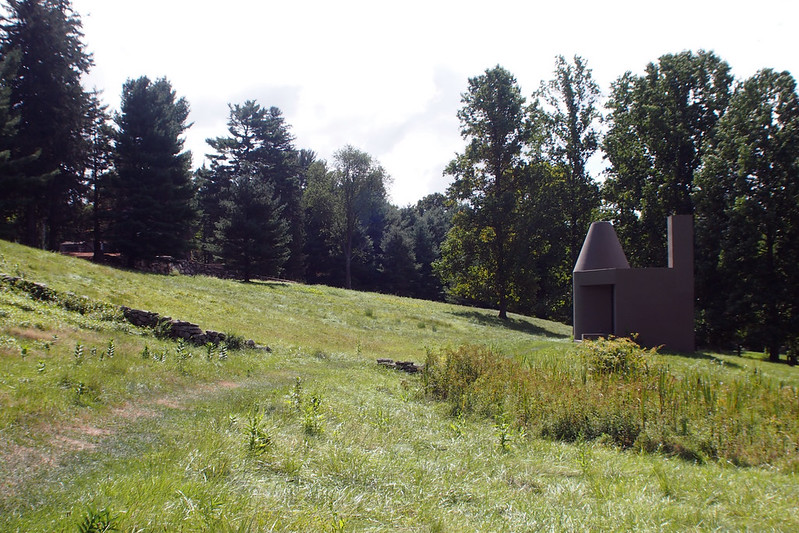
Up the hill from the Studio is "Da Monsta," the last building that Johnson completed on the property (1995). Each building Johnson peppered across his land follows from some stylistic preoccupation at the time. In this case, it's Deconstructivism, which makes sense considering he co-curated an exhibition on the "movement" at MoMA in 1988.
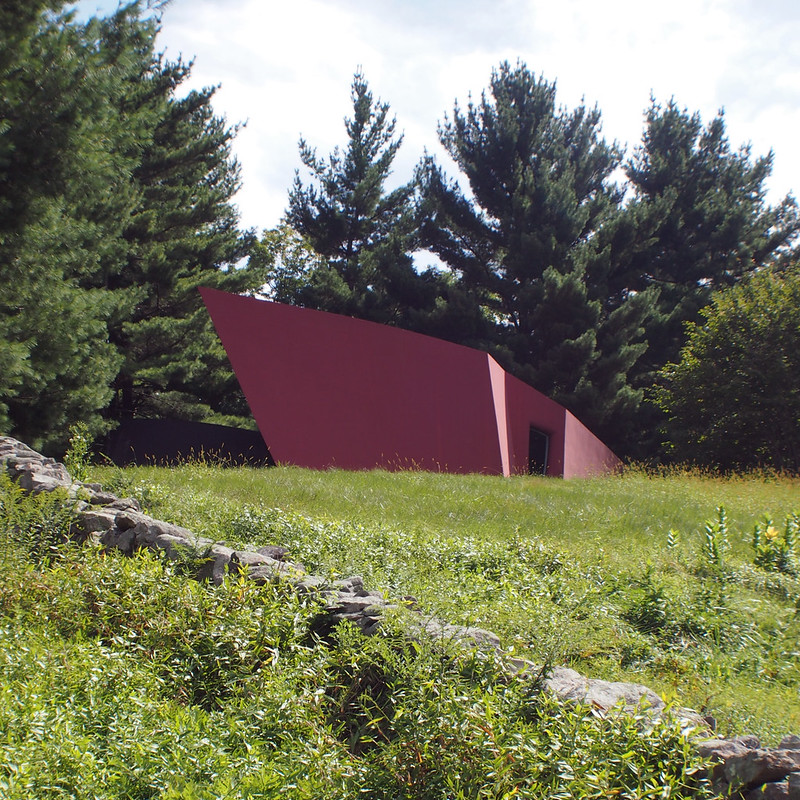
The narrow window in "Da Monsta" appears to exist just to frame the Studio:
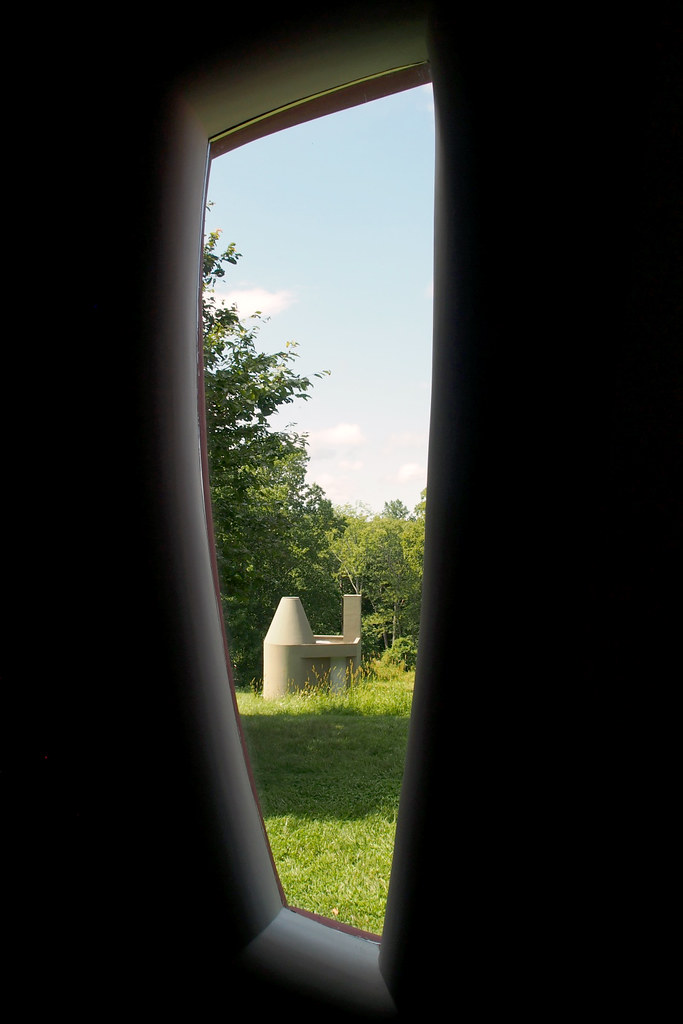
Getting closer to going inside:

On first stepping into the Studio, there's a view of the fireplace and a window – the only one in the structure that otherwise uses skylights to bring in natural light.
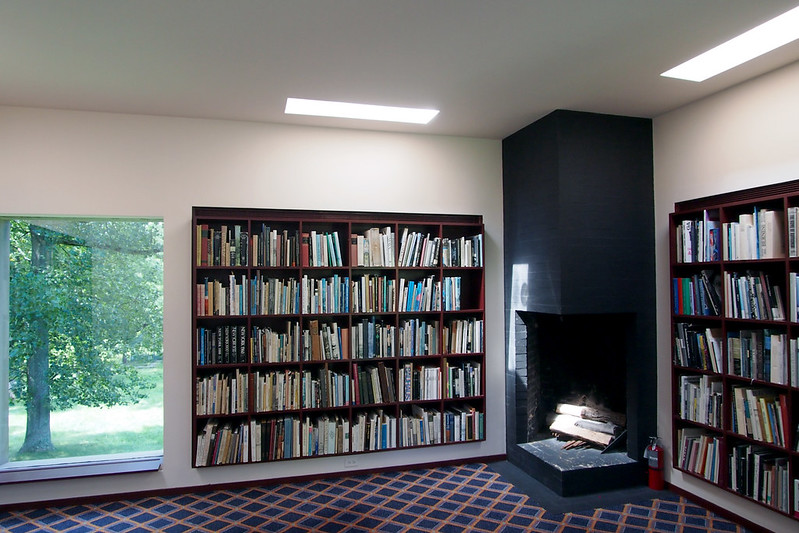
A turn to the left reveals what is happening below the truncated cone: here is Johnson's table that was positioned so he could look out the window.

It's easy to see why Johnson put his desk here, particularly in regards to the great natural light for reading. At the same time, there is something uneasy about it, as if he was putting himself below an almost religious halo, which in turn elevated the importance of his presence in the room over that of the books.
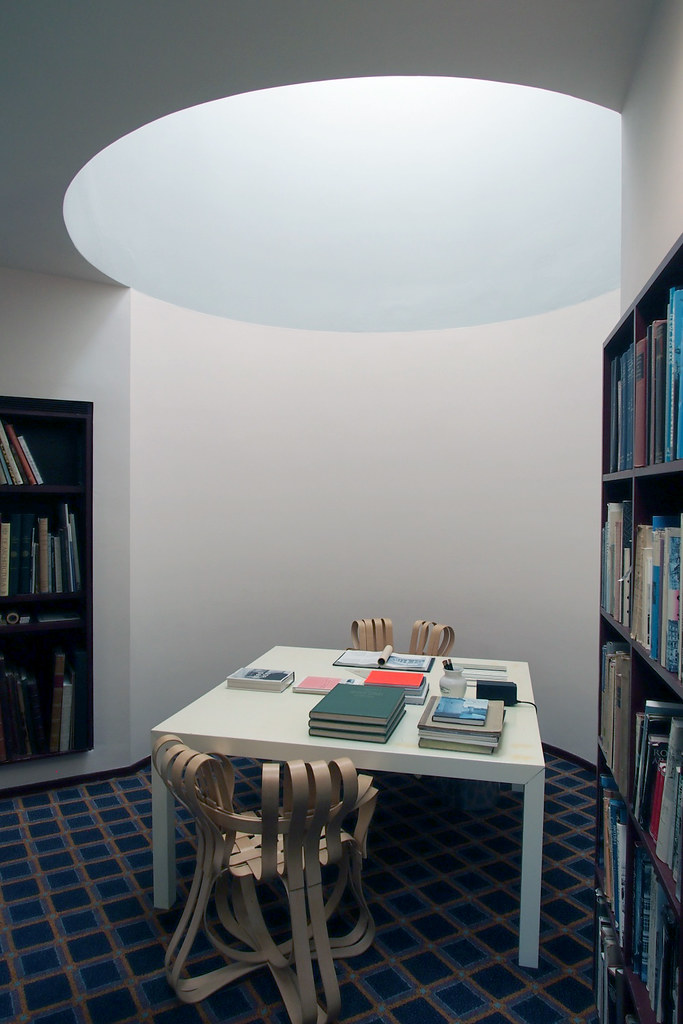
Here is a glance up at the "halo":
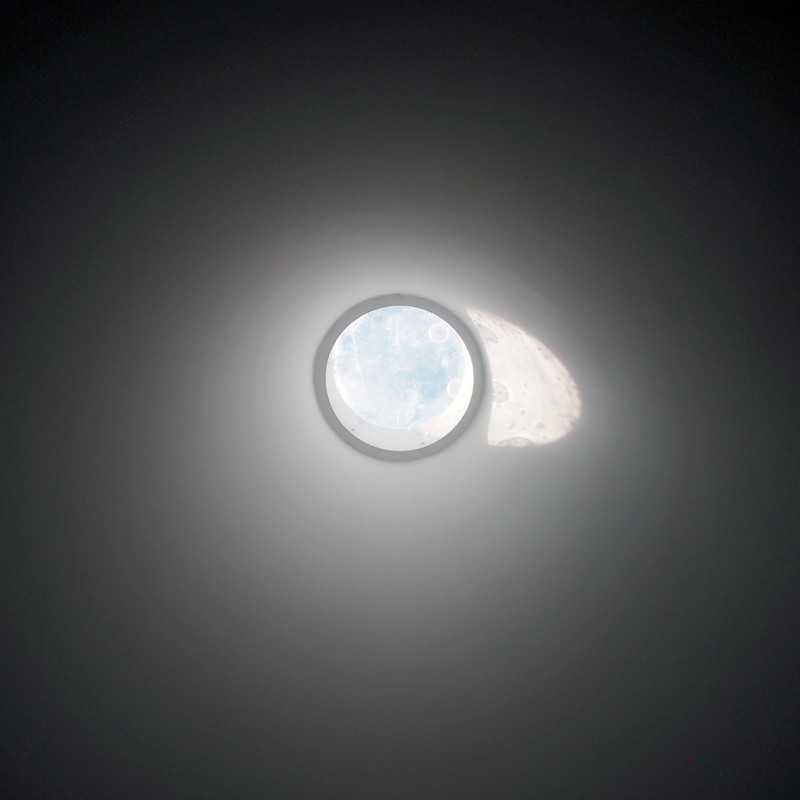
And here is what Johnson would have seen when looking up from what he was reading (barely visible beyond the tree limbs is his Ghost House, a chain-link homage to Frank Gehry completed in 1984):
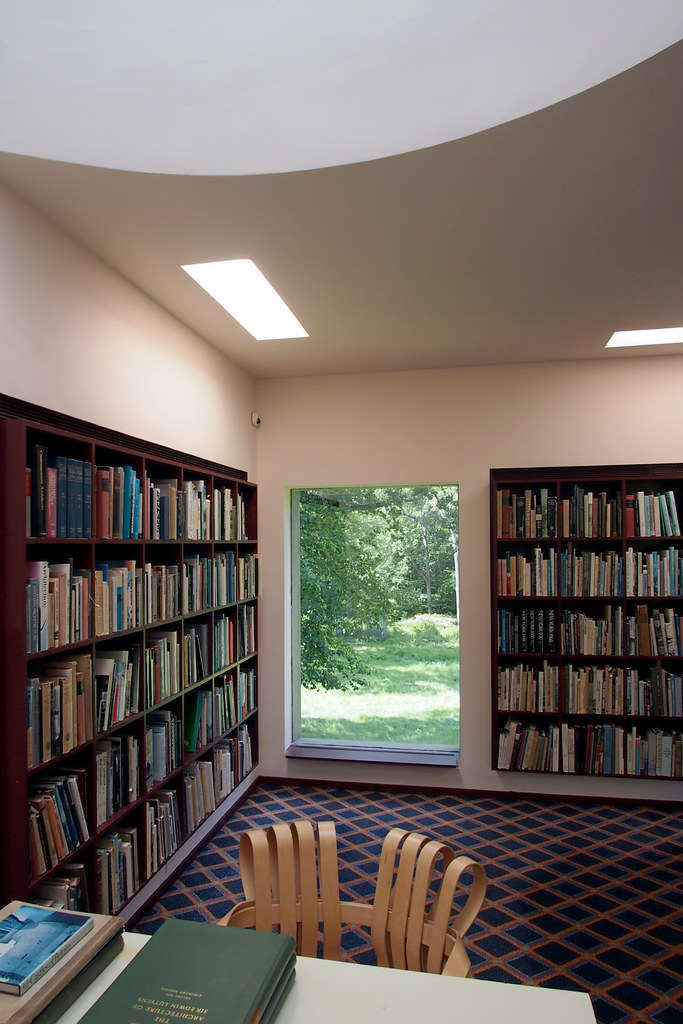
Even with that halo talk, he did not forsake the books. Each of the three bookshelves has a small rectangular skylight. Here one shoots light down onto the fireplace:

And here is a detail of that skylight, revealing how lightbulbs would have lit up the books after the sun went down (note that there are no other lights in the room, be they in the ceiling or on his desk):

What about the books? Well, according to our group's tour guide, the table is maintained in the manner Johnson left it shortly before he died in January 2005. Old books and recent books (among those, one on a 2002 MoMA exhibition and a monograph on Peter Eisenman) sit neatly aligned besides drafting implements, pencils, a pencil sharpener, and a roll of trace paper. This setup says a lot about Johnson's personality and his attitude toward books – OCD and respectful, respectively.

I snapped only a couple detail photos of the bookshelves, this one because it includes a GA Document I had just written about on my Unpacking blog:

And this one because of the way the young face of Zaha Hadid was looking at me and must have looked at Johnson when he went in and out of his remarkable little Studio.

The Studio was completed in 1980 and therefore exhibits some postmodern tendencies that are at odds with the Glass House proper: brick instead of glass; a jumble of forms instead of one Platonic form; and references to old buildings in the cone and chimney. Here is the approach to the Studio from the direction of the Glass House:

Up the hill from the Studio is "Da Monsta," the last building that Johnson completed on the property (1995). Each building Johnson peppered across his land follows from some stylistic preoccupation at the time. In this case, it's Deconstructivism, which makes sense considering he co-curated an exhibition on the "movement" at MoMA in 1988.

The narrow window in "Da Monsta" appears to exist just to frame the Studio:

Getting closer to going inside:

On first stepping into the Studio, there's a view of the fireplace and a window – the only one in the structure that otherwise uses skylights to bring in natural light.

A turn to the left reveals what is happening below the truncated cone: here is Johnson's table that was positioned so he could look out the window.

It's easy to see why Johnson put his desk here, particularly in regards to the great natural light for reading. At the same time, there is something uneasy about it, as if he was putting himself below an almost religious halo, which in turn elevated the importance of his presence in the room over that of the books.

Here is a glance up at the "halo":

And here is what Johnson would have seen when looking up from what he was reading (barely visible beyond the tree limbs is his Ghost House, a chain-link homage to Frank Gehry completed in 1984):

Even with that halo talk, he did not forsake the books. Each of the three bookshelves has a small rectangular skylight. Here one shoots light down onto the fireplace:

And here is a detail of that skylight, revealing how lightbulbs would have lit up the books after the sun went down (note that there are no other lights in the room, be they in the ceiling or on his desk):

What about the books? Well, according to our group's tour guide, the table is maintained in the manner Johnson left it shortly before he died in January 2005. Old books and recent books (among those, one on a 2002 MoMA exhibition and a monograph on Peter Eisenman) sit neatly aligned besides drafting implements, pencils, a pencil sharpener, and a roll of trace paper. This setup says a lot about Johnson's personality and his attitude toward books – OCD and respectful, respectively.

I snapped only a couple detail photos of the bookshelves, this one because it includes a GA Document I had just written about on my Unpacking blog:

And this one because of the way the young face of Zaha Hadid was looking at me and must have looked at Johnson when he went in and out of his remarkable little Studio.

You have the book, "The Library of Philip Johnson"?
ReplyDeleteNo, unfortunately I don't.
DeleteI must say, looking at this studio from outside, it looks a bit odd in design. But inside it's pretty cool. Especially the chairs...I like them very much
ReplyDeleteYes, Frank Gehry chairs. I forgot to mention that he designed those.
DeleteDoes he use the studio only for reading or for architectural work too ??
ReplyDeleteI'm guessing both. Some hints are at the Glass House website, in Johnson's words: "I used to work, writing articles and sketching, in a corner of the Sculpture Gallery. That was fine, but again, you’re distracted by wind, the sun, the waving of trees. It’s very hard to work where you have nature. Nature and work don’t go together; you’ve got to put blinders on. And it’s very important to get isolation. ... So I built this little building ... a work of sculpture in addition to being a useful room. ... a very small room with no water, no telephone, no loud speakers of any kind, just air conditioning, thank you very much. An air conditioned monk’s cell is what it is. It’s meant for contemplation. ... But mostly you’re surrounded with, in my case, books because books to me are the most exciting decoration in the world and if you really want not to work, you can say, oh I do have to look at that one, don’t I? And you get up and spend the next 20 minutes looking up something in a book that you shouldn’t be looking at. But nevertheless, at the end of a couple of hours you’re deep in work that you never thought you’d be able to start. And so an enclosed small room is of great importance."
Delete